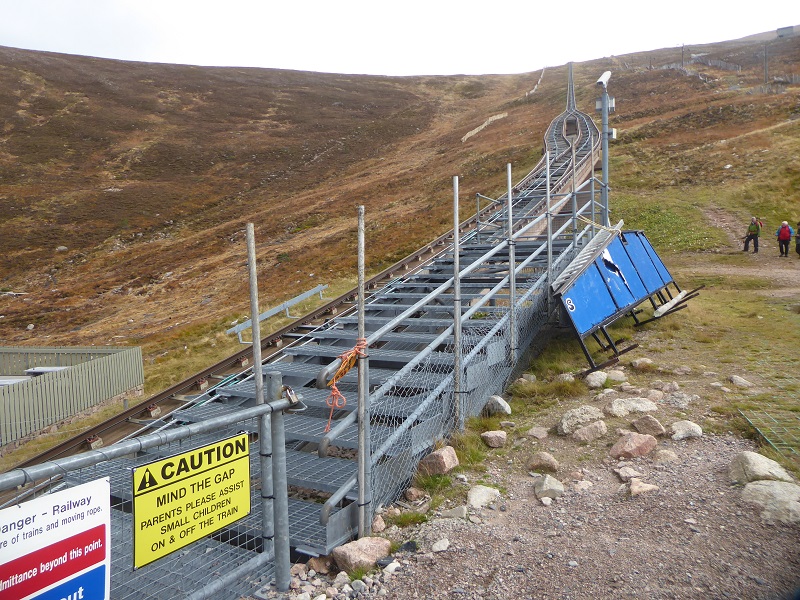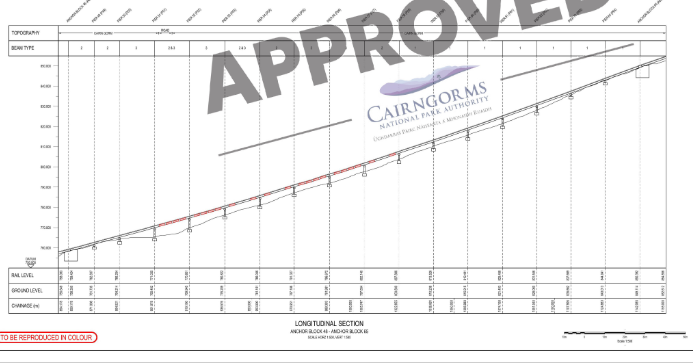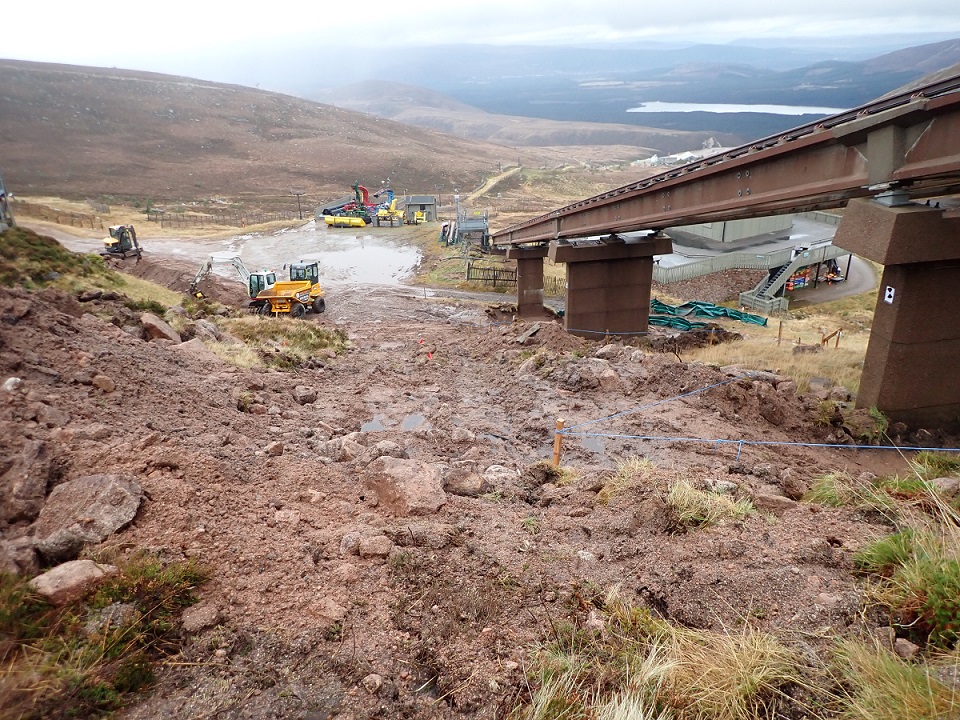
Over the years there has been a lot of criticism of the positioning of the “mid-station” loading area and the increase in travel time, and hence delays, when it is in use, but this post takes a look at a couple of aspects that as far as I know have never been discussed.
Why was the loading area built where it is and not at the passing loop?

At the Public Audit Committee meeting on 02/12/2009, during which MSPs asked about the changes in the design (not just the change from steel to concrete), George Foulkes said:
“Morrisons persuaded you [i.e Highlands and Islands Enterprises(HIE)], to change the specification?”
To which Sandy Brady, HIE’s acting Chief Executive Officer and Director of Strategic Planning, replied:-
“That was done as part of a cost-saving exercise”.
Cost-saving or cost-cutting?
The original Health and Safety file, which is LEGALLY required by the Construction Design and Management regulations, is only available as a hard copy. It should contain details of the original design by A.F.Crudens and ALL subsequent changes. I applied for this under an FOI but with Covid restrictions it may be hard to examine for some time. The COWI report mentioned that the file was incomplete! That is not HIE’s fault but a failure of the Cairngorm Mountain Trust to ensure that their subsidiary Cairngorm Mountain Ltd (CML) maintained the file in its entirety (I will come back to this in a separate post).
Only examination of the H&S file will confirm or contradict the following. My suspicion is that the original design by A.F. Crudens placed the mid-station stop at the passing loop, requiring a loading area at each side – normal design practice! But they were then told to alter it by HIE as part of the “cost-saving exercise” to a single loading area lower down, i.e. half the loading area = half the cost. If that is correct then those at HIE who made this decision either failed to take into account that the funicular would have to make two stops instead of one, increasing journey time and therefore reducing carrying capacity and income, or, decided to ignore that problem! Whoever made that decision should be held to account!

By moving the loading area further down construction costs would have been even further reduced because, as you can see from the screenshot and the photo above, the passing loop is about 4m above ground level, and would have required step access, whereas the loading area is almost sitting on the ground
Other effects of the mid-station being below the half way point
The two funicular carriages are connected by a head rope, attached to their uphill ends, and a lighter tail rope, attached to their downhill ends. The theory is that the carriage travelling down the mountain assists the carriage travelling up the mountain. This only works well if the down carriage (DC) is significantly heavier than the up carriage (UC) and on a steeper part of the track.
There are so many scenarios for the laden weights of each carriage and their whereabouts on the track that it is not possible to cover all of them. However, in relation to the offset (mid-station) loading platform I will consider three extremes for a carriage stopping :-
(1) The UC stops at the loading area to fill to capacity, the DC is full and is stopped on a relatively steeper section of the track. When they restart, because they are evenly weighted, the weight of the DC assists the electric motors in the top station.
(2) The UC stops at the loading area to fill to capacity but the DC is empty. In this case the empty carriage does not have the weight to accelerate faster than the UC so does not assist the motors, more power is needed and there is an increased strain on the tail rope as the UC is then pulling the DC downhill! This will be reflected in a power surge on the electic meters which should be well known to the operators.
(3) And now the worst case scenario. The DC stops at the loading area and fills to capacity, the UC is full and therefore is stopped on a steeper section of the track uphill from the passing loop. The power needed at the electric motors will now be at its maximum as they start to accelerate the UC up a steep gradient without the assistance of the heavy laden DC which they will also be trying to get rolling downhill again via the TAIL rope. This will also happen again when the UC is on the steepest section of the track and the DC is slowing on the flattest part of the track below the Shieling. This puts maximum strain on the motors, the head and tail ropes and the highest point of the track PIER 91. The problems with this pier have been discussed in other posts on Parkswatch (see here) including that it appears to be falling into the hill!
If you watch this video from 10min 33sec the tail rope of the Cairngorm funicular can be seen to be whipping on its pulleys. Is this due to the strain placed on it as the DC is on a relatively flat part of the track and therefore trying to decelerate? What damage is that causing to piers, crossheads and pulleys?
What needs to happen
If HIE had commissioned a full survey into what went wrong with the funicular, maybe some of the questions raised here would have been answered.
There are so many unanswered questions that only a proper judge lead public inquiry into the whole history of the funicular, with all parties appearing in the witness stand, will get to the bottom of the fiasco. If HIE and their supporters have nothing to hide then they should be supporting this, not doing their best to derail it.

Flawed design is not the only problem. HIE refused to consider any other options, including a more direct alignment between the bottom station and the Ptarmigan bowl. That would have eliminated many of the problems associated with too many bends and changes in levels, as well as the “closed” system, associated with the present structure. The judge led inquiry also needs to take evidence on why HIE refused to consider alternative options.
Yet another well thought through exposé of the potentially flawed design of the Cairngorm funicular. If HIE believes that the original design and associated high cost design of repairing the comprehensive structural failures are robust, then it should be easy for them to respond and demonstrate that these concerns are meaningless. Instead HIE remains tight-lipped and I suspect is crossing its fingers that all will be OK after these costly repairs are complete. I agree with Dave Morris that there needs to be an independent judge led inquiry into the apparently arbitrary original design changes, the slipshod maintenance of the funicular of the years, whether the design of the repairs is appropriate, and why other options rather than funicular repairs were rejected using rigged figures. Unfortunately, I suspect that the Scottish Government will ignore calls for this independent inquiry, and will only be forced to act when the funicular structurally fails again.
To proceed to conduct major structural repairs to such a large and exposed structure without fully understanding why the funicular structure failed so early in its design life is complete folly. If HIE does know the reasons for this massive structural failure, why doesn’t it publish?